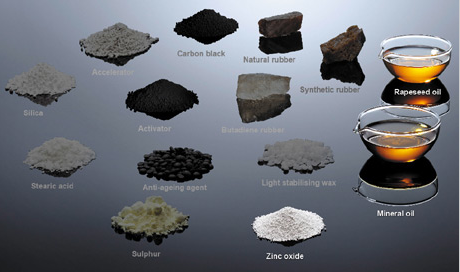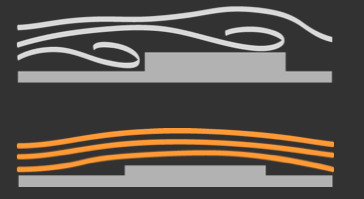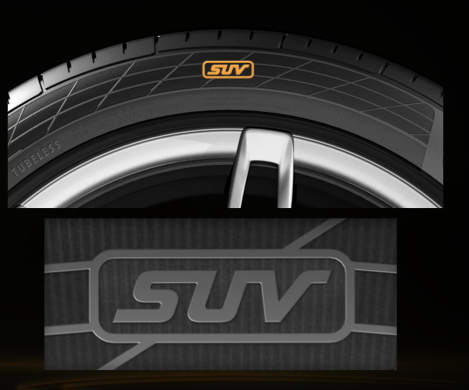Fuel duty has gone up SIX TIMES since the middle of 2008.
Unleaded now averages 133p per litre with diesel around 140p per litre. As people that love adventure, we often use our vehicles to get to exciting locations but figures released by the AA show that we’re thinking twice about going further afield simply because of the fuel price. They’ve found that half (49%) of its members are planning to drive more economically too.
The AA has been urging drivers to adopt ‘eco driving’ techniques since January. They believe driving smart could help the average family reduce the amount of fuel they use by a third. Some of these techniques include making sure tyre pressures are correct, accelerating smoothly and changing gear as soon as possible without labouring the engine and so on.
Simply cutting down the speed on the motorway can save the most fuel and the AA says 59 percent of its members have said they will do this as an eco driving measure. Cruising at 80mph is illegal of course but it burns up to 25 per cent more fuel than driving at 70mph. That’s 25 per cent more money disappearing just to get from A to B. In adventuring terms it means that instead of us tearing it up to the Lake District as fast as possible at a weekend, people are driving to adventure locations closer to home and doing it at a more sedate pace too, simply to save on the cost of the fuel to get there.
The Department for Transport also published a report in January which said 28 per cent of drivers would be willing to pay to learn fuel saving techniques and the AA offers a Drive Smart course – two hours where we’re taught ways of saving fuel through eco driving methods.
But while we can choose to drive more economically to explore new places, we can also choose a vehicle that is more efficient too. Car manufacturers are now under huge pressure to minimize CO2 emissions. They’re doing what they can which is why we’re now seeing such a surge in Hybrid vehciles coming out and tax incentives from the government to use a green vehicle. But the car makers have also passed part of the technology challenge on to the tyre manufacturers. At a recent launch of Continental’s newest Sport and Eco tyres in Portugal, the company’s tyre engineers spoke about the ‘target conflicts’ of designing tyres that can help us save fuel yet still remain safe.
Continental’s Product Development engineer, Markus Fischer (pictured), told me that 20 per cent of a car’s fuel consumption is due to the tyres. Out of that 20 per cent, 16 per cent is down to the rolling resistance of the tyre and 4 per cent is down to the aerodynamics of it. Make changes in these two areas and we get fuel savings. As such, the focus of a tyre designer in the past few years has been on reducing the rolling resistance (making the tyre run better on the road). But when you make a tyre smoother you also loose grip in the wet so the challenge has been to design a tyre that saves us fuel but also keeps the wet braking ability.

 In the case of Continental’s new SportContact 5 tyre, engineers have come up with an entirely new compound which they have nicknamed ‘Black Chilli’ – a magic new ‘ingredient’. This new compound can certainly be considered ‘magic’ as it’s been created using the latest advancements in nanotechonology as Christian Koetz, head of R&D explained,
In the case of Continental’s new SportContact 5 tyre, engineers have come up with an entirely new compound which they have nicknamed ‘Black Chilli’ – a magic new ‘ingredient’. This new compound can certainly be considered ‘magic’ as it’s been created using the latest advancements in nanotechonology as Christian Koetz, head of R&D explained,
“We’re no longer relying on mechanical mixing of compounds,” he said. “Mechanical mixing has now become chemical engineering.”

Christian further acknowledged that the massive improvement in rolling resistance and wet grip has all been down to nanotechnology. While previous tyres have been improved gradually, the ContiSportContact 5 has made a giant leap in a short period of time – all thanks to looking at the structure of tyre materials at the nano-scale. Christian added,
“A couple of years ago it would have taken us 10 years to get this level of improvement. We used to have separate departments but now we interact more closely during the overall design process.”
Although the ContiSportContact 5 is aimed at the drivers of sports cars and saloons (think Audis and BMWs), the increase in the number of SUVs (Sports Utility Vehicles) and 4x4s has meant that Continental has developed a ContiSportContact 5 for these types of vehicles – up to 20” – and with a SUV wording on the tyre wall.

SUVs and 4x4s tend to be the types of vehicles us adventurers like to drive and Markus says he’s surprised at how this market continues to grow.
“On the one hand we have the car manufacturers concerned about CO2 and trying to make lower emissions cars with fuel efficient tyres,” he says, “But then it amazes me that this market still grows and grows. The need for an SUV tyre has all come from OE demand.”
Here Markus is referring to the rise in cars like Nissan’s Juke crossover, Audi’s Q5, the Freelander and Porsche’s Cayenne and so on. These types of SUVs and 4x4s now have superb sports performance and need the tyres to deliver too.

Continental has realised that many of us never drive these cars off-road though so it means we’re rolling along inefficiently on tyres that are more suited to dirt tracks. Markus adds,
“For SUVs we already have the ContiCrossContact tyre which has a 50/50 on and off-road capability. But for drivers who don’t go off road, the new ContiSport 5 makes sense as it is a road tyre designed especially for SUV owners to give great handling and sporty performance.”
But what about owners of other cars? Can we fit tyres that are more fuel efficient? And what kind of fuel saving can we make?
The answer is yes and we can save about half a litre per 100km. This is thanks to the first true ‘Eco’ tyre from Continental called the ContiEcoContact5 (the previous version was called the ContiEcoContact3). Like the Sport tyre, the ContiEcoContact5 has also benefited from advances in rubber compounds but the design focus has been to reduce the rolling resistance without loosing wet grip. Christian said,
“This is a product we are very proud of and the targets we set our engineers were really high.”
Like Black Chilli, the EcoContact5 has ‘Carbon Black Compound’ which again, is a chemically engineered ‘ingredient’ that has been used specifically in the flexing zone of the tyre. Other design changes to help improve fuel efficiency include a change in the tread pattern, a flatter load zone and a special compound on the contact area which has less “dangling chain ends in the polymer network”. In normal language, this means the rolling resistance is low yet the tyre material has good wear characteristics.
Perhaps the most interesting development has been in the aerodynamics. The pilots reading this will love what Continental has done. By removing the raised lettering on the sidewall, Continental has reduced the drag profile of the tyre. In short, just a simple lowering of the lettering has led to smoother airflow over the entire sidewall. They’ve also removed the raised side ribs to further improve the smoothness as we can see in the orange airflow diagram below.

As a result of all of these individual changes, a car fitted with ContiEcoContact 5 tyres will use around 3% less fuel than the same vehicle equipped with standard tyres.

Some may want to dismiss the half litre saving over 100kms from an eco tyre as being too small to worry about. But combine this with some eco driving techniques (coming soon on Adventure 52) and by filling up with fuels such as Shell’s ‘FuelSave’ where it’s claimed we can save a litre per tank it means that over large distances over a period of a year we can make big (fuel) savings.
Anything that means we can spend more on adventures and continue driving to our favourite places without worrying about the fuel cost (or the environment), then the better.
Just don’t try licking the tyres to see if they really have used Black Chillis…


COMMENTS